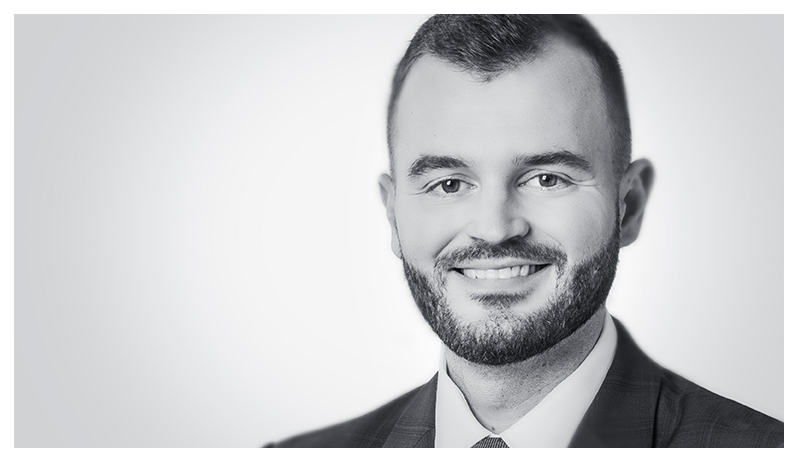Articles of Interest
Integrating ESG Considerations into Pension Plan Optimization
Financial markets are increasingly interconnected with the many issues facing society today. Environmental, social and governance (ESG) risks and opportunities are front and centre. Geopolitical conflicts, climate change and even labour disputes can have far-reaching repercussions around the world.
Traditionally, optimizing a pension plan’s investments focused primarily on increasing the investment portfolio’s expected return, while minimizing risk relative to the plan’s liabilities. While this continues to be true today, ESG considerations should also be factored into strategic investment decisions. And for good reason: ESG-related risks can be as significant, if not more so, than other financial risks, such as volatility in equity markets, interest rates and inflation.
Yet, for administrators of smaller plans, such as those with less than $1 billion in assets, integrating ESG factors can be a considerable challenge and a number of questions exist:
- Where to begin?
- What are some of the challenges?
- What is the best approach to take?
Favouring a customized approach
As with any portfolio optimization process, pension plan administrators should be responsible for strategic decisions. Therefore, applying a customized approach is essential when taking ESG considerations into account in the management of a pension plan.
The first step is for pension plan administrators to identify the key ESG considerations to be taken into account by the plan’s investment managers. This list can serve as a link between the administrators’ investment beliefs and the organization’s values and priorities—which may already be in place, such as within the context of a sustainable development plan. This also improves the robustness of the governance framework, as these key ESG considerations allow for more informed decision-making about investment managers and the allocation of plan assets while enabling closer monitoring of plan investments.
A customized approach needs to be taken at the outset of the optimization process, but also during implementation (e.g., as part of manager selection) and as part of the ongoing monitoring of the investment structure. The complexity of the sustainable investing space and its implications on long-term performance require reporting and accountability from investment managers that speaks directly to the key ESG considerations identified by plan administrators.
Impediments to the implementation of a customized approach
There are challenges to the implementation of a customized approach, such as the required level of expertise and appropriate use of time. However, the breadth and depth of the sustainable investing industry provide solutions for many of these challenges. Where the implementation of a customized approach may be a serious challenge is for plans that have moved to an outsourced chief investment officer (OCIO) model for their investments. Indeed, the OCIO model hinges on the notion that “optimal” can be achieved for any type of investor based on pre-established building blocks. OCIO providers generally offer a selection of predetermined funds corresponding to each major asset class in which a pension plan may wish to invest.
In theory, this model has some interesting pros—notably in terms of efficiency, given the limited involvement of plan administrators. However, the OCIO model’s ability to deliver an optimal portfolio is challenged when plan-specific considerations are added to the equation. The specific ESG considerations that can drive a plan administrator’s long-term views can differ from one plan to another. It is therefore difficult for ESG considerations to be properly considered within a model that is based on generic building blocks for all investors. Additionally, the model’s multi-layered structure creates challenges in obtaining customized reporting, as it can be difficult to obtain information that is specific to each plan from each of the underlying investment managers.
Finding the right strategy
Considering the challenges, how can smaller pension plans integrate ESG considerations into the optimization of their investments and adopt a customized approach? Here is the strategy that we recommend:
1. Keep critical decisions in the hands of plan administrators:
- Establish a common understanding of ESG risks and opportunities.
- Gain a clear view of the current degree of ESG integration in the management of the plan’s assets to set a baseline for potential improvements.
- Identify a list of plan-specific ESG considerations to be used as the basis for evaluating investment managers’ inclusion of ESG factors and to help guide future investment decision-making.
- Properly document preferred approaches and expectations with respect to the integration of ESG considerations.
2. Partner with investment managers:
- Clearly communicate expectations regarding the integration of ESG criteria to investment managers.
- Establish a process for ongoing investment manager reporting and evaluation, including channels for feedback and the establishment of improvement plans, if necessary.
The implementation of such an approach does require an investment of time, especially at the outset of the process. However, as any investment professional will tell you: strategic decisions are the overwhelming driver of investment performance over the long term and should therefore remain in the hands of pension plan administrators. ESG considerations are no different.
Moreover, the implementation of a customized approach to sustainable investing can be greatly facilitated with the support of experienced specialists who can help flesh out the specific views of plan administrators on long-term ESG risks and opportunities. And once all this important work has been carried out, the investment portfolio will likely be better positioned to withstand the significant and growing challenges facing society today, and tomorrow.

Mélinda Bastien, ASA, Principal, Investment consulting, Normandin Beaudry
Mélinda has worked on Normandin Beaudry’s investment consulting and pension and saving teams since 2007. She has a wide range of experience in monitoring the performance of investment managers, and she has had the opportunity, over time, to serve clients of all sizes in many industries.
She helps organizations design, optimize and communicate their group savings plans. She works to reinvent traditional savings approaches to put employees’ financial health first. She is also the specialist in charge of the institutional sustainable investment team. Together with her clients, she develops and implements sustainable investment approaches that enable them to better identify the ESG risks in their portfolio but above all to seize new opportunities that will benefit the growing societal challenges of today and tomorrow.

Jesse Chrumka, CFA, Principal, Investment consulting, Normandin Beaudry
Jesse Chrumka has close to 15 years of experience as an actuarial and investment consultant, having worked with public, private and non-profit clients. At Normandin Beaudry, he uses the breadth of his expertise to assist institutional and private investors with strategic asset allocation and portfolio construction; investment manager research, selection and implementation; risk management and governance; and pension/investment committee reporting and trainings. Jesse is also a member of Normandin Beaudry’s private equity and sustainable investment research groups.

Marko Skrga, CFA, Associate consultant, Investment consulting, Normandin Beaudry
Marko assists pension funds, foundations and other institutional investors in setting their investment strategy and selecting and monitoring their investment managers. Marko is a member of Normandin Beaudry’s public equity and sustainable investment research groups. Marko is a CFA charterholder and has worked in the asset management industry for over five years, including a number of years with a global investment management firm. He holds a Bachelor of Business Administration and a Master of Finance from the University of Sherbrooke.